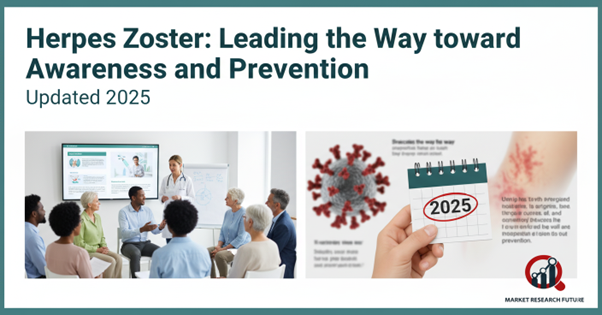Herpes zoster: It's Time to Lead with a Change

Herpes Zoster: Leading the Way toward Awareness and Prevention, Updated 2025
Introduction: Learning about a Virus that Comes Back to Life
Shingles, also known as herpes zoster, is much more than just a skin rash. It hurts to remember a virus that a lot of people had years ago: chickenpox. The varicella-zoster virus can stay in the body for decades before becoming active again, causing a burning, blistering rash and nerve pain that can last long after the visible symptoms go away.
Even though healthcare has improved, herpes zoster still affects millions of people around the world, especially older adults and people with weak immune systems. As we move closer to 2025, more awareness, vaccination, and early intervention are making it easier to manage and stop diseases.
What is Herpes Zoster, Exactly?
The varicella-zoster virus, which is the same virus that causes chickenpox, wakes up from its dormant state in the nervous system and causes herpes zoster. The virus doesn't go away after someone gets chickenpox; it stays in the nerve tissues near the brain and spinal cord, waiting for a chance to reactivate.
When the virus is triggered, usually by getting older, being stressed, or having a weak immune system, it travels along the nerve pathways and causes a painful rash that usually appears on one side of the body. The condition can make you feel like you're on fire, itch, and get blisters that fill with fluid and then scab over in a few weeks.
Shingles itself isn't contagious, but the varicella-zoster virus can spread from someone who has active lesions to someone who hasn't had chickenpox or the chickenpox vaccine. This could give the new person chickenpox.
More than Just a Rash: Symptoms and Complications
Before the rash appears, people with herpes zoster may feel tired, have headaches, a mild fever, or a tingling feeling in a certain part of their body. The pain can get very bad once the rash appears, and people often say it feels like a sharp, stabbing, or burning pain.
Most people get better from shingles in a few weeks. But in some cases, the pain lasts for months or even years. This is called postherpetic neuralgia (PHN). This nerve pain that won't go away can have a big effect on quality of life, especially for older people.
Other Things that could go wrong are:
- Shingles can affect the facial nerves, which can cause eye infections that make it hard to see.
- If blisters get infected, they can cause skin infections.
- Weakness or numbness that comes and goes in the affected limbs.
Early diagnosis is very important because prompt medical care and antiviral treatment can help lessen the severity and length of these symptoms.
Treatment and Management in the Year 2025
There is no cure for herpes zoster at this time, but modern treatments aim to lessen pain, prevent complications, and speed up recovery. Doctors often give patients antiviral drugs like acyclovir or valacyclovir. These work best when they are started within 72 hours of the first symptoms.
Pain management is an important part of treatment and may include:
- Over-the-counter painkillers or prescription medications for nerve pain.
- Creams or numbing agents that go on the skin to calm it down.
- Changes to your lifestyle, such as getting enough sleep, drinking enough water, and using gentle skin care products.
In 2025, healthcare systems are putting more and more emphasis on preventive vaccination as the best way to stop shingles. Modern vaccines help the body fight off infections and lower the risk of getting sick and having long-term problems like PHN.
Taking the Lead in Health Protection to Stop It
Prevention is still the most important part of managing herpes zoster. Health experts say that adults, especially those over 50 or with weak immune systems, should get vaccinated to greatly lower their chances of getting shingles.
In addition to getting vaccinated, eating a balanced diet, exercising regularly, and managing stress can all help keep your immune system healthy and lower your chances of reactivation. Public awareness campaigns are now focusing on both vaccination and recognizing symptoms early. This encourages people to get medical help before the infection gets worse.
In conclusion
Herpes zoster may be an old virus that has come back to life, but it can have a new, terrible effect. As we move into 2025, new medical treatments and awareness campaigns are changing how people think about and deal with the condition.
Healthcare systems all over the world are doing a lot to make shingles less of a problem by promoting vaccination, encouraging timely treatment, and helping people recover. Leading with awareness and taking steps to prevent problems today will make tomorrow healthier and pain-free for millions of people who are at risk.

Leave a Comment